When it comes to the realm of construction and heavy-duty transport, side dump trailers stand as a critical piece of equipment, exhibiting versatility and efficiency in unloading materials. As manufacturers of semi-trailers, we recognize the importance of understanding how these trailers operate, their mechanisms, and their applications in various industries. This guide delves deeply into the functionality of side dump trailers, enabling potential users to make informed decisions.
What is a Side Dump Trailer?
Side dump trailers are specialized semi-trailers that allow for the unloading of bulk materials through their side, rather than from the rear. This design offers various advantages, particularly in limited access areas or when quick unloading is needed. Commonly used for transporting aggregates, constructions materials, and bulk liquids, side dump trailers have become increasingly popular due to their unique advantages over traditional dump trailers.
Key Features of Side Dump Trailers
| Feature | Description |
|---|---|
| Dual Axle System | Most side dump trailers feature a dual axle system, which improves stability and maneuverability. |
| Hydraulic Lift | A hydraulic lift mechanism allows for the smooth operation of the side discharge, enhancing efficiency. |
| Tipping Mechanism | Side dump trailers employ a tipping mechanism, which enables gravity to assist in unloading materials quickly. |
| Versatile Design | They come in various sizes and configurations, catering to multiple loading and unloading needs. |
| Safety Features | Equipped with safety locks and hydraulic cylinders to prevent accidental dumping and ensure stable operations. |

How Does a Side Dump Trailer Work?
The operation of a side dump trailer can be broken down into a sequence of carefully orchestrated movements that ensure the efficient unloading of materials.
1. Hooking Up the Trailer
The first step involves connecting the side dump trailer to a compatible tractor unit. A robust fifth-wheel coupling is utilized to establish a secure connection. It’s crucial to ensure that the trailer’s weight is within the towing vehicle’s capacity.
2. Loading the Trailer
Once securely connected, the trailer is loaded with the desired material. This can be done using front-end loaders, excavators, or conveyor belts, depending on the material type. The design allows for high-capacity loads, making it suitable for transporting aggregates, sand, gravel, and even agricultural products.
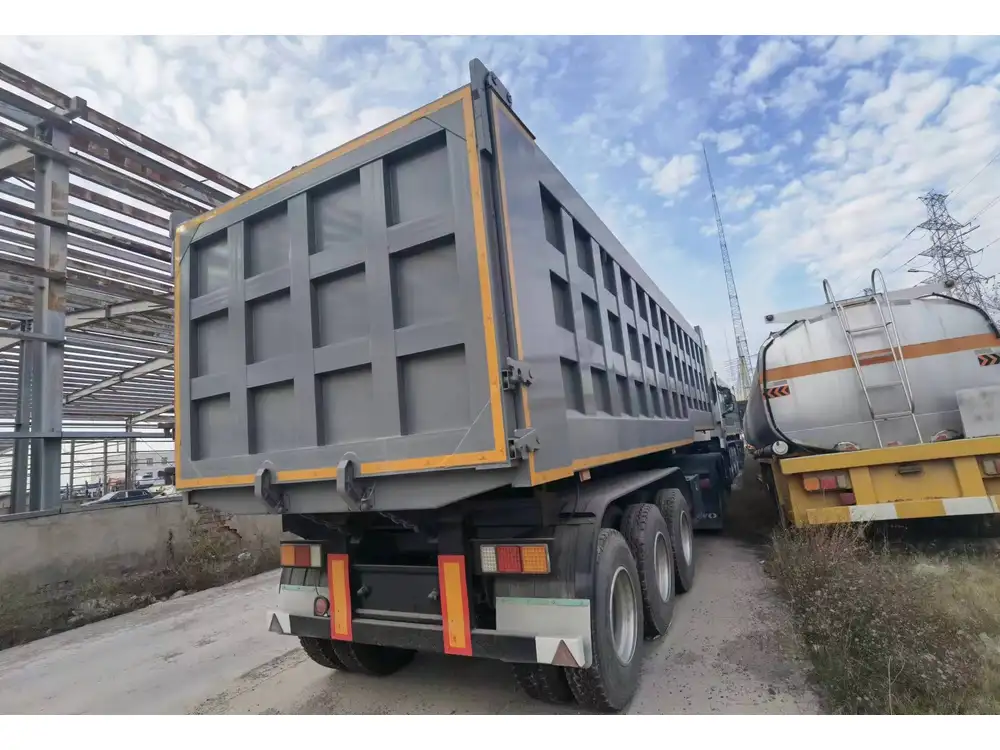
3. Activating the Hydraulic System
After loading, the operator activates the hydraulic system. This typically involves a control panel located in the cab of the tractor. The hydraulic cylinders, strategically placed on either side of the trailer, begin to lift one side of the trailer, causing it to tilt.
4. Unloading the Material
As the trailer tilts, gravity assists in discharging the load from the elevated side. The side dump mechanism ensures that the materials are unloaded efficiently and accurately, allowing for precise placement. This process is particularly beneficial in confined spaces where traditional rear unloading may not be feasible.
5. Returning to the Horizontal Position
After unloading is completed, the hydraulic system repositions the trailer back to its horizontal stance. This movement is controlled, ensuring safety and stability before moving on to the next load or returning to the transport cycle.
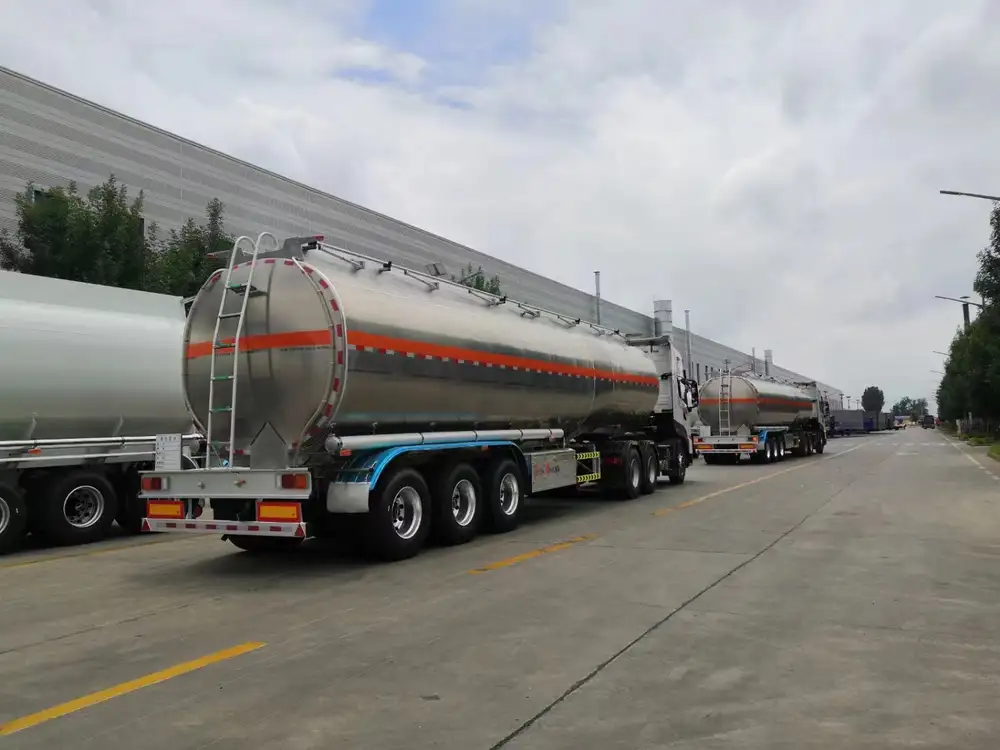
Advantages of Using Side Dump Trailers
The benefits of utilizing side dump trailers for transporting and unloading materials are numerous. Here are some key advantages:
Enhanced Unloading Speed
- Quick Discharge: Side dump trailers can unload materials in seconds, significantly reducing downtime on job sites.
- Dual Sides: Some models allow unloading from either side, providing flexibility and improving workflow efficiency.
Improved Maneuverability
- Tight Spaces: The side unloading feature is particularly useful in congested areas where space is limited.
- Less Ground Disturbance: Compared to traditional rear dump trailers, side dumps minimize ground disruption during unloading.

Versatile Applications
- Diverse Materials: From construction debris to bulk agricultural products, side dump trailers can handle a wide variety of materials.
- Suitable for Various Industries: Their functionality makes them ideal for construction, agriculture, mining, and waste management.
Safety Enhancements
- Stable Operations: The design and hydraulic systems ensure that the trailer maintains balance during unloading.
- Operator Control: The ability to control unloading from the cab enhances safety by maintaining distance from potential hazards.
Common Applications of Side Dump Trailers
Side dump trailers are utilized across a spectrum of industries, showcasing their versatility and value. Below are some of the most prevalent applications:
| Industry | Application |
|---|---|
| Construction | Transporting aggregates, concrete, and asphalt for roadworks. |
| Mining | Moving ore and processed minerals to processing facilities. |
| Agriculture | Distributing bulk fertilizers, grains, and seeds across fields. |
| Landscaping | Delivering soil, mulch, and decorative stones to residential projects. |
| Waste Management | Transporting demolition debris or local waste materials. |
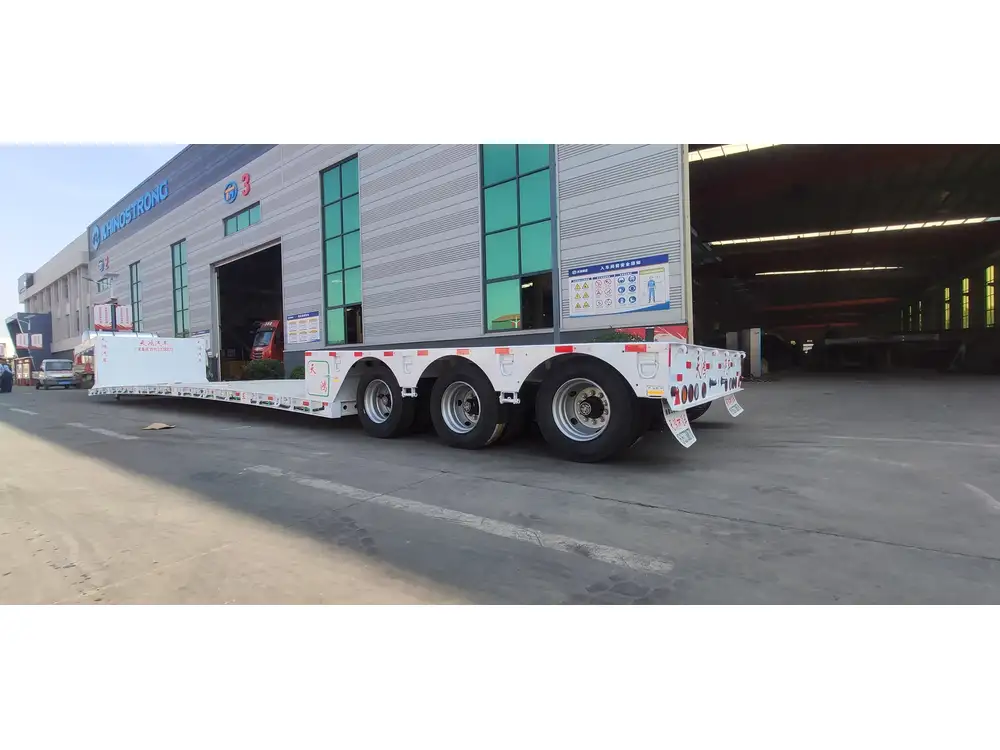
Maintenance Tips for Side Dump Trailers
To ensure optimal performance and longevity of side dump trailers, regular maintenance is imperative. Here are some essential maintenance tips:
1. Inspect the Hydraulic System
The hydraulic system is crucial for the trailer’s operation. Regularly check for leaks, wear, and tear, and ensure fluid levels are sufficient.
2. Monitor Tire Pressure
Maintaining proper tire pressure is vital for safe transport. Check the tires regularly for signs of wear or damage.
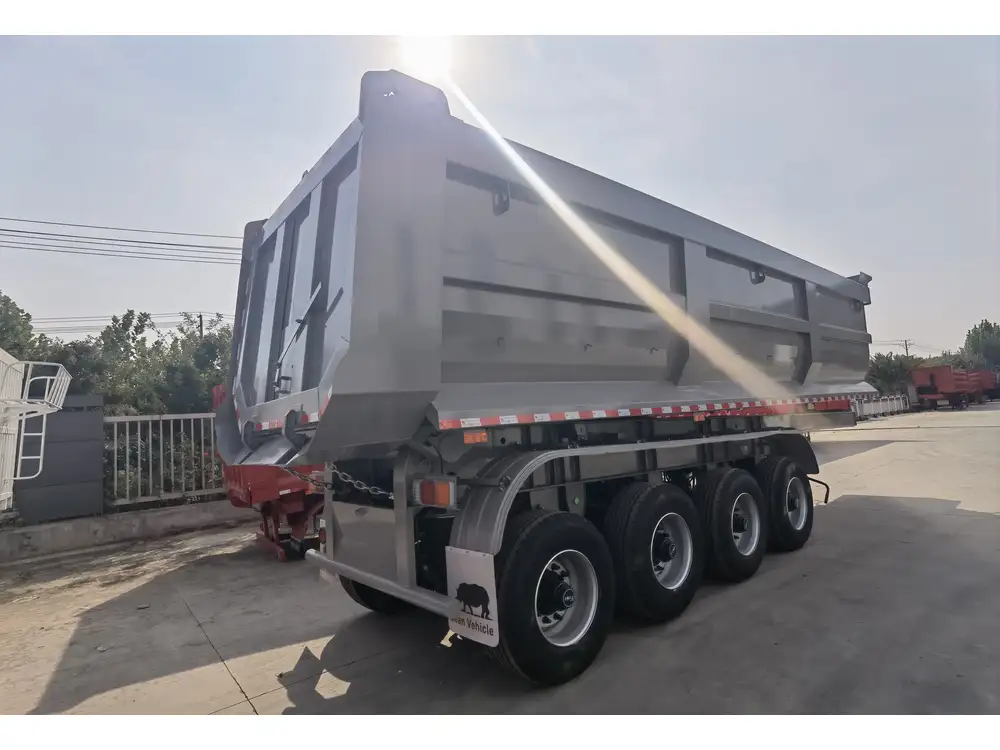
3. Conduct Regular Brake Checks
Ensure that the braking system is functioning correctly. Inspect brake pads and fluid levels to enhance safety during transport and unloading.
4. Clean the Trailer
After each use, clean the trailer to prevent material build-up that can affect unloading performance and weight distribution.
5. Check Electrical Connections
Since many side dump trailers feature electronic components for hydraulic systems, checking wiring, connections, and battery health regularly can prevent operation failures.
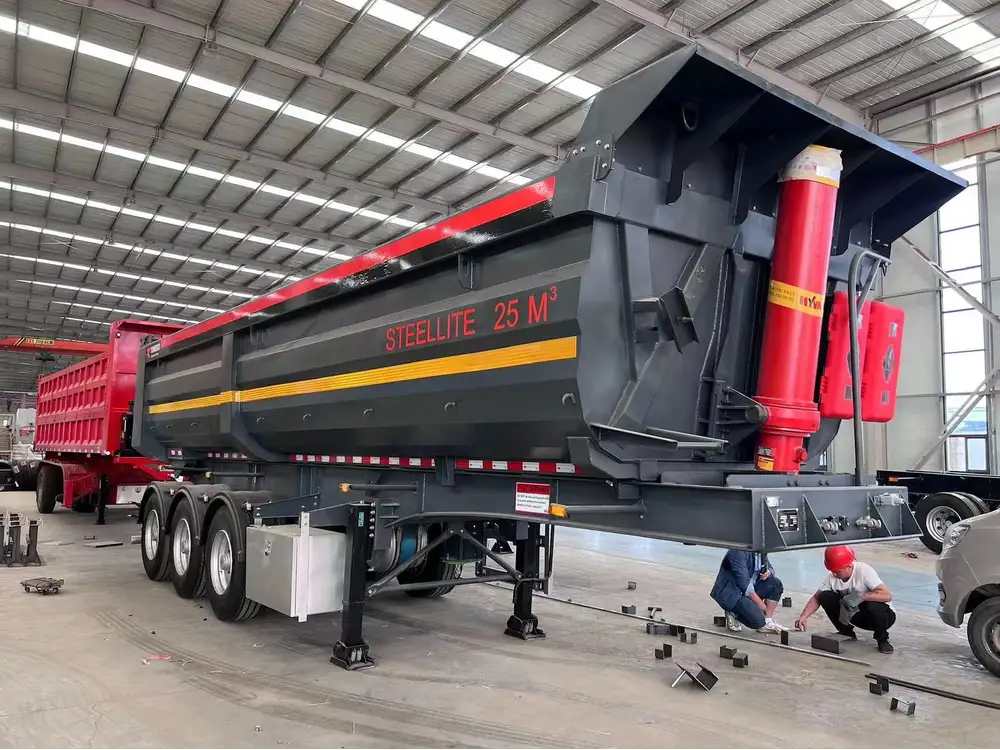
Evaluating Side Dump Trailers: Key Considerations for Buyers
When considering the purchase of a side dump trailer, it is important to evaluate several key factors that influence performance and suitability for your needs:
Capacity Requirements
Assess the volume and weight of materials you plan to transport. Choose a trailer size that matches your operational requirements.
Hydraulic System Quality
Investigate the reliability and efficiency of the hydraulic system. A higher-quality system will improve unloading speed and minimize maintenance.

Build Quality and Materials
Consider the durability of the trailer. Look for high-strength steel construction and reliable welds to ensure longevity in rugged conditions.
Manufacturer Reputation
Research manufacturers and read reviews or testimonies to ensure they have a reputable history in producing quality side dump trailers.
Customization Options
Some manufacturers offer options to customize features or add enhancements based on specific needs. This can be beneficial if you have unique loading and unloading conditions.
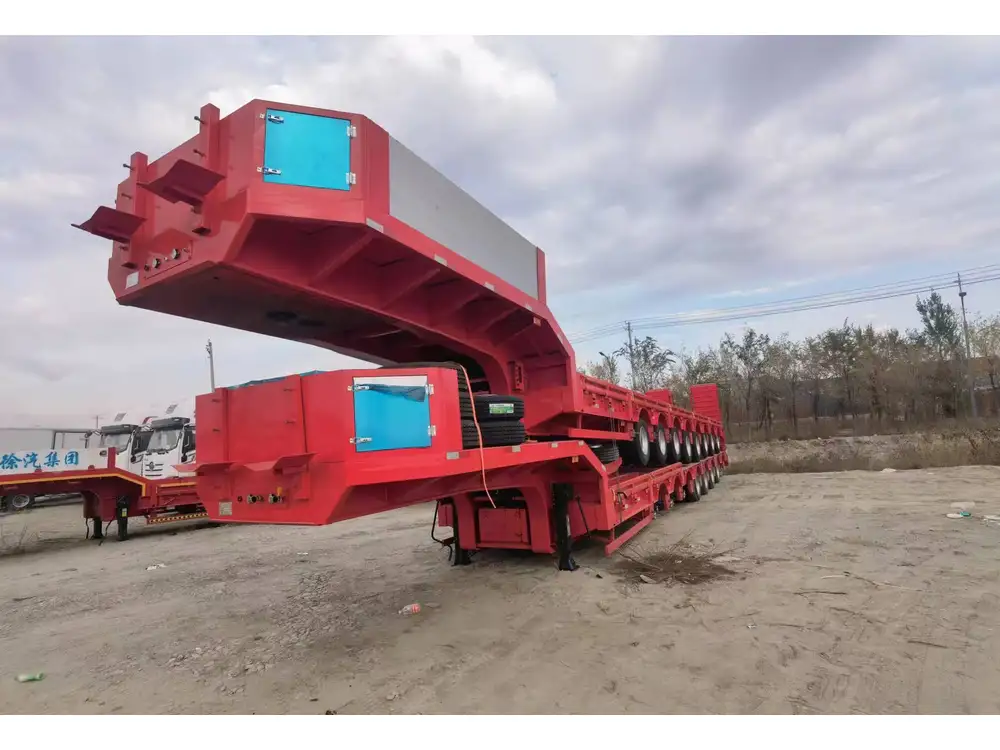
Conclusion
Understanding the functionality of side dump trailers and their advantages can significantly enhance operational efficiency in transporting and unloading bulk materials. Their design fosters speed, safety, and versatility, making them integral in multiple industries. By considering the aforementioned factors when purchasing or utilizing side dump trailers, users can optimize their performance, ensuring that projects are completed with minimal delays and maximum efficiency.
As the demand for efficient material handling grows, investing in quality side dump trailers might be just the edge you need to elevate your operational capabilities and drive success in your business endeavors.



